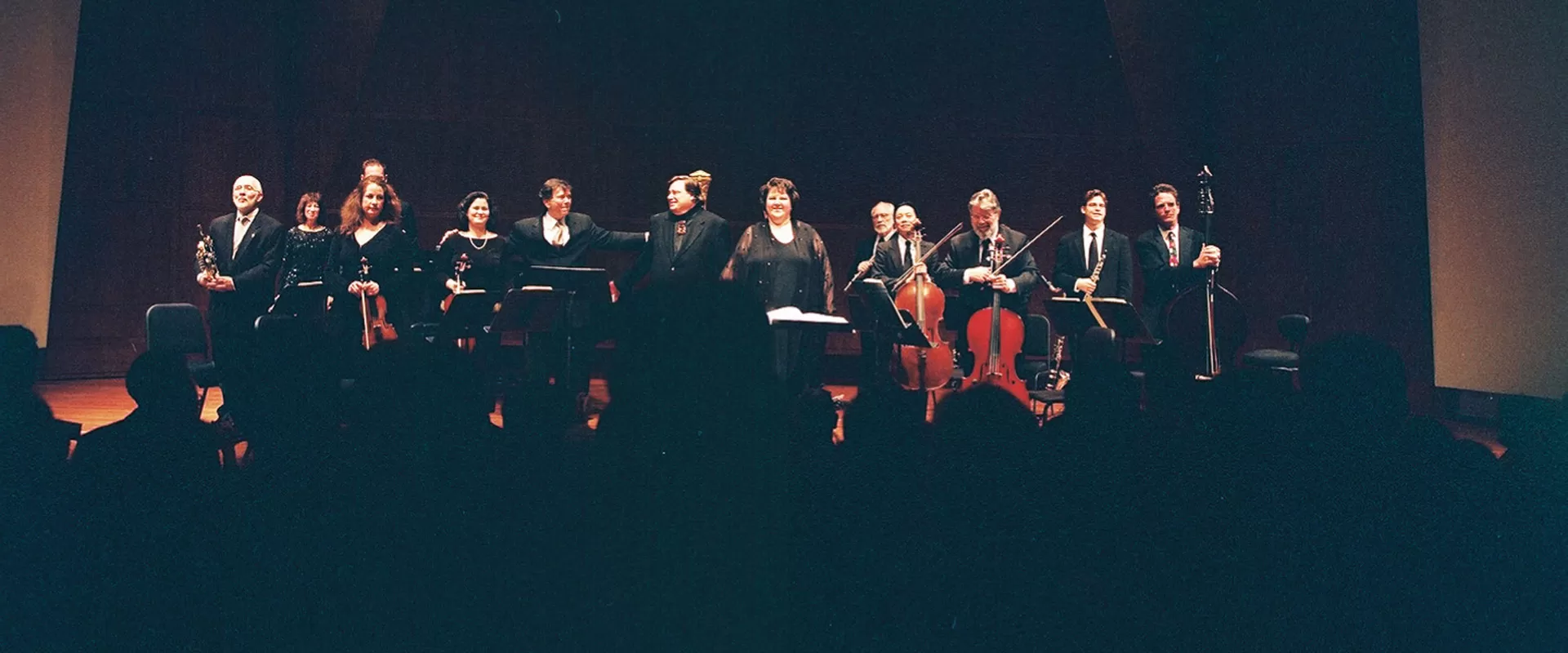May 10, 2004 - 12:00 pm
Poland holds a unique position in the history of the Holocaust. Poland was a center of Jewish life and tradition, with approximately three million Jews in its cities, towns and villages at the start of World War II. At the war’s conclusion, fewer than 300,000 were still alive, and virtually all aspects of a once-vibrant Jewish community had ceased to exist.
The organized persecution of Poland’s Jews began almost immediately after the Nazi’s invasion in September 1939, with Jews stripped of their livelihood, property and basic rights of citizenship. Ghettos were established in most cities as a way of ensuring the complete separation and isolation of Jews, and eventually facilitating their mass deportation to concentration and extermination camps. The German decree officially establishing the Warsaw ghetto, and listing the streets within it, was issued on October 2, 1940, but in fact the forced relocation of Jews into that district had been occurring gradually for months. Jews were informed of the decree on October 12 – Yom Kippur. By November 15, 1940 the Jewish quarter was sealed off, and approximately 350,000 Jews found themselves imprisoned. Jews from elsewhere in Poland and from other parts of the Reich were resettled into the ghetto. By early 1941 the ghetto held over 440,000 souls. Over thirty percent of Warsaw’s population was crammed into less than three percent of the city’s total area.
The Warsaw ghetto contained three sectors. The “little ghetto” contained some modern apartment houses along wide streets where one could find the occasional shop, and for a time even cafes, restaurants and cinemas. Its population included an intelligentsia and some comparatively affluent families. In contrast, the “big ghetto” further north was a “jungle of oppressed humanity,” where the poor struggled daily for a bite of bread and a place to sleep. Amid hunger and illness, the average death rate was 6,000 a month. Life in the third, industrial part of the ghetto, housed workers placed in barracks and used by the Reich as cheap industrial labor. Compared to the inhabitants of the “big ghetto,” however, these workers were fortunate, because they received food rations, and an employment card which promised some protection, albeit temporarily.
In the end, all residents of the three sectors were destined for the same horrors. Mass systematic deportations to the East began on July 22, 1942. By the end of August, about three-quarters of the Jews in the ghetto had been sent to Treblinka. The ghetto’s final destruction followed the April 1943 armed resistance now known as the Warsaw ghetto uprising.
Pola Braun (c. 1910 – 1943) was among those in the Warsaw ghetto. A pre-war poet and cabaret artist, Braun continued her artistic life in the ghetto, and later while incarcerated at the Majdanek concentration camp. However, few details about her life are known, and the detective work to uncover her story is not easy. As with most Holocaust victims, whose lives are rarely marked by birth and death certificates, research must rely heavily on a dwindling pool of survivors to verify identity, and recollect and reconstruct their individual and collective history.
Evidence suggests that Braun was born around 1910 in Minsk-Mazowiecki, 25 miles east of Warsaw. Until the beginning of the war, she worked in the Warsaw offices of the satirical review Szpilki. In the Warsaw ghetto, she belonged to a small group of artists at Sztuka (Art), a literary cabaret/café on Leszno Street in the “little ghetto.” The group included such artists as the well-known Jewish poet and songwriter Wladyslaw Szlengel, singer Marysia Ajzensztadt (the “Ghetto Nightingale”), several literary personalities, and the distinguished Warsaw pianist Wladyslaw Szpilman (whose memoir was the basis for the award-winning film The Pianist).
Daily performances at the Sztuka were organized by a group of writers from the Living Journal, a satiric daily chronicle of the ghetto, written by a group of authors under the direction of Szlengel. Szpilman described these programs as “a witty chronicle of ghetto life full of sharp, risqué allusions to the Germans.” The Sztuka was considered an elite club for the ghetto’s few people of any means. First-person accounts of an evening at the Sztuka note the high quality of its black market coffee and caviar, and of the musical, humorous and satirical offerings. Those who could gathered for brief escape from the surrounding atmosphere of death and disease. Stepping outside meant a return to the ghetto’s grim realities – the starving, diseased, and lice-infested ghetto population whose despairing cries for “Bread, Mercy, Death” quickly extinguished the Sztuka’s fleeting moments of pleasure.
In 1942, during the mass deportation of 300,000 Jews from the Warsaw ghetto to Treblinka, Pola Braun was assigned to the Ostdeutsche Bautischlerei-Werkstätte (OBW), an industrial plant, where her work helped postpone her own deportation for a period. It has not been established exactly when she was transported to Majdanek. At Majdanek she was active in the women’s camp, along with other Polish political prisoners involved in the cultural life. Most of the women were from Warsaw, and many probably knew Pola Braun from before the war. Braun participated in the concerts organized by Polish prisoners from Pawiak, to whom we owe thanks for remembering and collecting some of Braun’s poems. Braun was murdered on November 3, 1943 in the mass executions code-named Aktion Erntefest (Operation Harvest Festival) by the Nazis – the liquidation of approximately 42,000 Jewish prisoners from Majdanek and other concentration and labor camps in the Lublin district.
Two of the six poems in this song cycle, Jew and Tsurik, were written during Braun’s period in the Warsaw ghetto. The remaining four – Mother, Letter to Warsaw, Ordinary Day and Moving Day – date from her incarceration in Majdanek. Braun sang her own songs, accompanying herself on the piano. These heartfelt songs stirred the emotions, particularly of Polish women from places other than Warsaw who identified with her message. Braun gave concerts at Majdanek in a barrack that contained furniture from the ghetto, including a piano. Several secret concerts were held there for the Jewish and Polish women prisoners. Braun’s extant poetry was assembled after the war by historians. These include the Polish political dissident Aleksander Kulisiewicz, himself a prisoner in Sachsenhausen, who copied out variants of some of Braun’s Majdanek pieces.
Pola Braun’s poems in Kleinkunst style are revealing in their observations about her surroundings, her deportation, and her Jewish identity. They open a window, especially, to the emotional life of all women caught inextricably in the web of Holocaust tragedy. Braun’s voice of musical witness ensures that she will not be swallowed up by the anonymity of history. Through Thomas Pasatieri’s music, her words will tell a story, and remind us that each of the victims of the Holocaust was an individual. Each had a life, a story, and aspirations beyond survival. Through this extraordinary music, we offer a tribute to the human spirit, and do our small part to honor the Holocaust’s legacy.
Notes by Mina Miller © musicofremembrance.org
Used by permission: Naxos Recordings, American Classics
Music of Remembrance is indebted to Bret Werb, musicologist of the United States Holocaust Memorial Museum, for bringing Pola Braun’s texts to our attention and facilitating their use. Without his generous assistance, this project would not have been possible. In addition, we would like to thank David Sharir (Jaffa, Israel), Robert Kuwalek (Majdanek Museum), and Dr. Feliks Tych, Director of the Jewish Historical Research Institute (Warsaw) for assisting with the project’s biographical research. We are indebted to Barbara Milewski for her sensitive English translation of Pola Braun’s Polish texts.
"The shouting, cheering audience brought the performers and Pasatieri back for multiple bows."
Philippa Kiraly, Seattle Post-Intelligencer, May 2004
Opera News found last season's "enthusiastically received" premiere of Pasatieri's Letter to Warsaw "an important addition to the repertoire."
Opera News, Summer 2004


